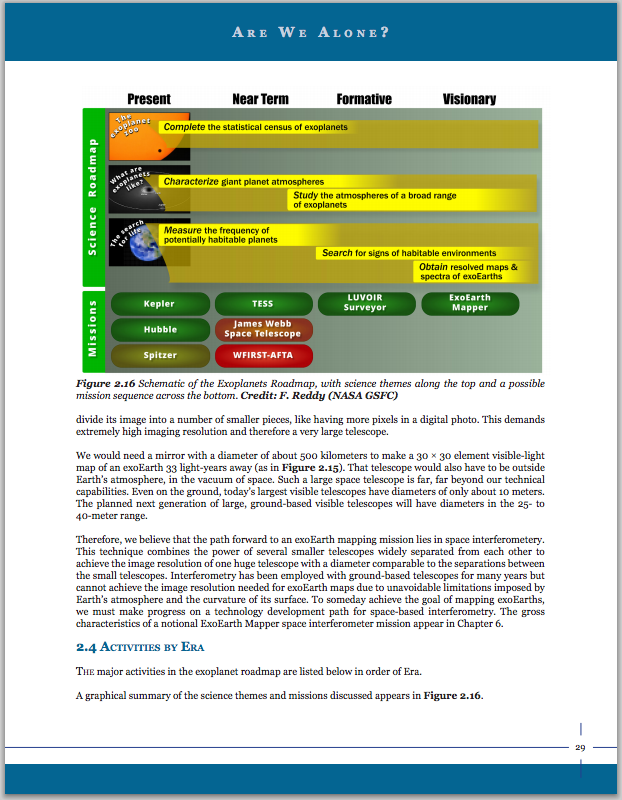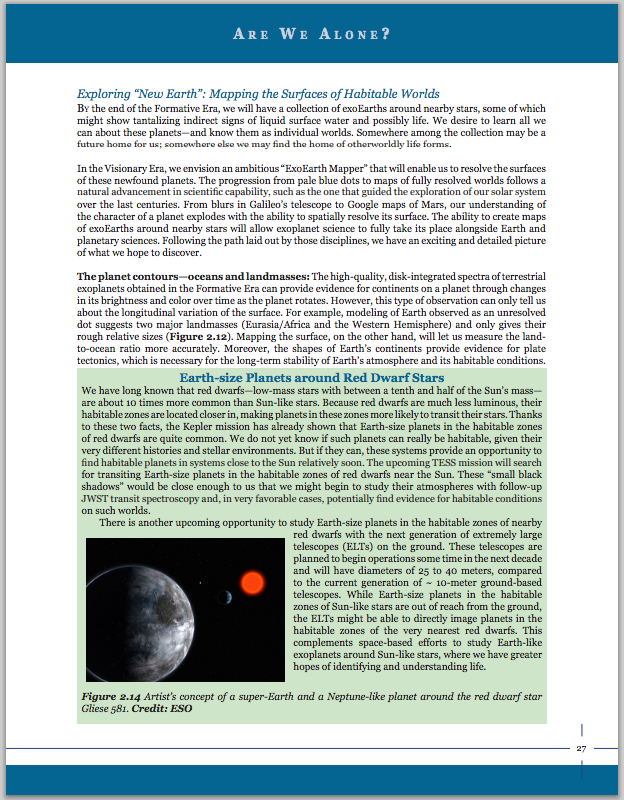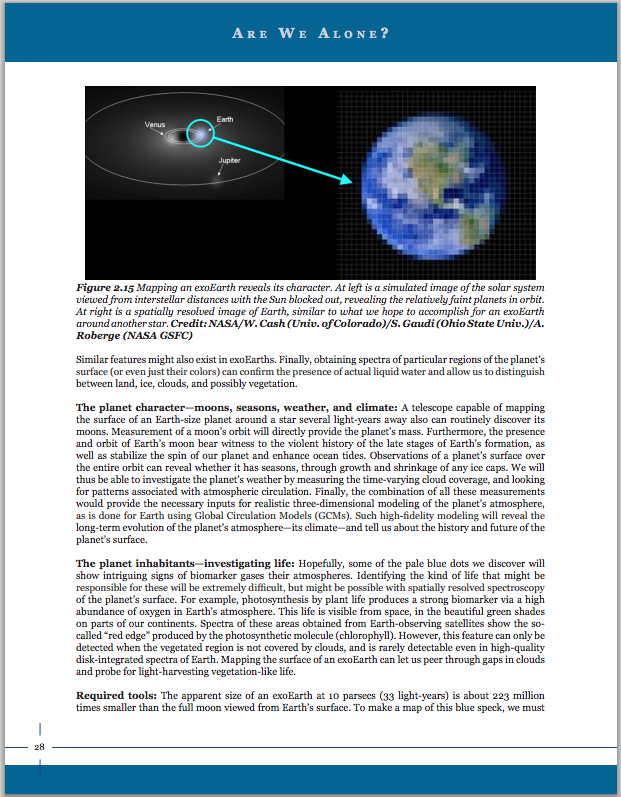It looks like you're using an Ad Blocker.
Please white-list or disable AboveTopSecret.com in your ad-blocking tool.
Thank you.
Some features of ATS will be disabled while you continue to use an ad-blocker.
share:
Nyiah
Yep, I know that episode well, it was TNG's "Relics", where they found Scotty in the crashed ship's transporter buffer. I always feel for Scotty every time I see it, 75 years out of the loop.
Thank you. I loved that episode. Like I said I am a fan of the Trek universe but I am far from an expert in it like a lot of people. Thanks for that and the link to that site!
ST cloaking is, as far as I know, the bending of light around objects to obscure them from the electromagnetic spectrum. Basically, Trek came up with the idea & we're working on getting it going right now. I think if someone out there has any kind of cloaking tech, it's probably more along the line of shifting things out of phase with space-time, like Stargate's Sodan cloaks do. Which would basically be shifting into sub-space, I think. But you are right about signatures, it's bound to be awful difficult to not leave a footprint somehow.
Yes. That's what I think as well. Even in ST there were ways to detect a cloaked ship due to the act of cloaking it.
This is actually brilliant. I'm not aware offhand if there's ever been any tri or binary systems out there that have suddenly lost or gained a star without explanation. I'd imagine that if lensing is a byproduct, we're bound to see it eventually with all the stargazers on this rock.edit on 1/9/2014 by Nyiah because: (no reason given)
Thanks. There have been 'anomalies' but usually it's just a bad photographic plate (in the old days) or CCD (today).
Like I said, it's far from a complete idea but a little idea I've been working on and developing a search algorithm for (very very very slowly, maybe I will finish it by the time I'm 80 and we have our own warp drives lol)
edit on 12-1-2014 by JadeStar because: (no reason given)
Aliensun
reply to post by JadeStar
You said:
"The most common civilization in our galaxy is likely a Type I or II. It is likely that if we were in a galaxy with a Type III we'd know it because as Jim Oberg said the signs would be all around us and easily observable. If a Type IV civilization existed in our galaxy it would likely be almost impossible to detect if it didn't want to be found. And for all purposes a Type V would be referred to by most people on Earth as "God.'"
Let us look again at the phenomena of the pulsars and quasars. Most of you won't know that when discovered, both sets of phenomena were considered to be signs of greatly advanced civilizations. Since all of this business starting with Moon outward is carefully controlled, we have no idea about what the secretkeepers know already as they slip it to us piecemeal to nudge the populace of Earth along toward finally recognizing that we aren't so grand and belong to a Third World world instead.
You are correct with regards to the discovery of pulsars. They were called LGMs originally (for "Little Green Men") but this was more of a joke than an actual thought that that's what they were and soon a perfectly natural explanation backed up with sound observational data formed the basis of the study of a new class of objects we call pulsars.
Quasars were similar but from what I read only a pair of Russian scientists thought they might be alien (because quasar 3C 273 appeared moving faster than light).
Again, by closer examination neither the quasar was moving faster than light. Nor was it something small within our galaxy but actually very distant objects the size of galaxies.
RIght now there is a current mysterious phenomena in radio astronomy called Fast Radio Bursts (FRBs).
As with other astronomical phenomena there is probably a completely natural explanation for them and some theories for them have been proposed. There are also some who have joked that perhaps they could be the result of some extraterrestrial technology.
Regardless, SETI@Home is planing to search positions of them in the next year or so.
In the realm of technology development, we have a couple of exciting projects to report on. The next generation in the long line of SERENDIP experiments, SERENDIP VI, is in rapid development and we hope to deploy it early next year at both Arecibo and the GBT. s a bonus, SERENDIP VI will also look for the new and mysterious fast radio bursts.
SETI data analysis is coming to a phone or tablet very near you! The SETI@home application for android based cell phones and tablets is now in beta. We plan to release this application to everyone in the next few months.
The difference between how FRB's and UFO's are handled could not be any more stark. Here, scientists have a mystery which some at least jokingly think could be aliens yet no one is going to rush to judgement without evidence that they are in fact aliens when other more plausible natural sources may account for them.
edit on 12-1-2014 by JadeStar because: (no reason given)
edit on 12-1-2014 by JadeStar because: (no reason given)
Ross 54
Using Benford's strategy, we might also want to listen a bit in the direction opposite the galactic center. This happens to lie in the constellation Auriga. If any two-way exchanges are going on, we might catch signals aimed at the center of the galaxy from points further out that happened to align with Earth's position.
Yep. There have been a few searches of the galactic anti-center done.
There's also the idea that we should listen in the opposite direction of events like Supernovae since these are visible at quite a distance and might be used by a species as a 'temporal sync' for a beacon.
Fascinating stuff
Would the Precursors from Halo be type 4? They did, after all, create all live in the Milkyway if I recall correctly? And Forerunners and their
cousins, a galactic type 3, Forerunners beeing high 3 and the other low 3?
Perhaps the silence is not about prime directive, but about survival? Like if you step into a forrest teeming with life, then suddenly all becomes quiet. Step on a twig and the pretator charges at you.
Perhaps the silence is not about prime directive, but about survival? Like if you step into a forrest teeming with life, then suddenly all becomes quiet. Step on a twig and the pretator charges at you.
Floke
Would the Precursors from Halo be type 4? They did, after all, create all live in the Milkyway if I recall correctly? And Forerunners and their cousins, a galactic type 3, Forerunners beeing high 3 and the other low 3?
Precursors would be perhaps a late type 3 and the Forerunners would be a young type 3.
The Precursors would have to be able to control multiple galaxies.
Perhaps the silence is not about prime directive, but about survival? Like if you step into a forrest teeming with life, then suddenly all becomes quiet. Step on a twig and the pretator charges at you.
Then the chances are we'd not exist since any predators would have found and eliminated us millennia ago.
Earth can be found, viewed and scrutinized at a level the would tell civilizations many light years away that there is a blue, watery world with continents and oceans, photosynthesis (plant life), methane cycle (methanogens at least), oxygen (larger life), and intelligence (waste heat from technology and city lights).
They could do this with either our current technology or near future technology planned by us:



So if we can do this in the next 30 years then why wouldn't civilizations 200 thousand or several million of years ago already have taken over?
It would only take a civilization about 50,000 years to survey half of the galaxy telescopically, making a list of worlds ripe for the taking and a few million to colonize the galaxy.
Predators make for good sci-fi but sci-reality is probably a bit more mundane.
It takes energy to prey upon another species. What would be the point given the vast distances both in physical distance and in metaphorical evolutionary distance?
edit on 12-1-2014 by JadeStar because: (no reason given)
edit on 12-1-2014 by JadeStar because: (no
reason given)
edit on 12-1-2014 by JadeStar because: (no reason given)
reply to post by JadeStar
Perhaps we are not ripe yet? Or perhaps wolfs dont hunt for maggots? Our radiowaves have not travelled very far either. I cant really imagen what anyone would wanna take from us that they cant get elswere if they can get here. What if they are somekind of techno-parasites, searching for advancer civilasations and then stealing the all the quantum constructs, power sources etc. Dont think they would be interrested by our smartphones, Fukushimas and Volvos..
Perhaps we are not ripe yet? Or perhaps wolfs dont hunt for maggots? Our radiowaves have not travelled very far either. I cant really imagen what anyone would wanna take from us that they cant get elswere if they can get here. What if they are somekind of techno-parasites, searching for advancer civilasations and then stealing the all the quantum constructs, power sources etc. Dont think they would be interrested by our smartphones, Fukushimas and Volvos..
A great many of the stars in our galaxy are old enough to have harbored intelligent life billions of years before Earth saw any life at all. There has
been time, several thousand times over, for the galaxy to have been completely filled with intelligent life, even at speeds well below those of light.
Humans don't seem to be under predation on this planet, on living under the heel of a conquerer from the stars. If the galaxy is a jungle and the strong prey on the weak, this would be the situation on this planet, wouldn't it? Since it isn't, there's a problem with this scenario, I guess.
Maybe the galaxy had time to civilize itself before we came along. Earth could be marked out on the galaxy's charts as a cultural and biophysical preserve.
There would presumably be some means of protecting such preserves from other late-comers, like us, but a bit more technically advanced, with the beginnings of the ability to travel the stars.
That may be the time in a young species development when they are openly contacted and brought into the fold of galactic civilization, so as not to disturb their stellar neighbors too much.
At the rate we're going, we could be being prepared, right now, for for such a cosmic tap on the shoulder, in the not too distant future.
Humans don't seem to be under predation on this planet, on living under the heel of a conquerer from the stars. If the galaxy is a jungle and the strong prey on the weak, this would be the situation on this planet, wouldn't it? Since it isn't, there's a problem with this scenario, I guess.
Maybe the galaxy had time to civilize itself before we came along. Earth could be marked out on the galaxy's charts as a cultural and biophysical preserve.
There would presumably be some means of protecting such preserves from other late-comers, like us, but a bit more technically advanced, with the beginnings of the ability to travel the stars.
That may be the time in a young species development when they are openly contacted and brought into the fold of galactic civilization, so as not to disturb their stellar neighbors too much.
At the rate we're going, we could be being prepared, right now, for for such a cosmic tap on the shoulder, in the not too distant future.
edit on 13-1-2014 by Ross 54 because: improved paragraph structure
Wow! He presented one of my off the wall ideas about prime numbers reflectors or emplacements around a star showing it up as a sign of intelligence.
Sorry haven't seen the whole thing yet.. Other demands on my time right now.
One unstated assumption is that every colony will be successful and each one will continue the grand galactic expansion plan. It might be possible that by the time they set up a viable colony the home planet civilization will be extinct. Also it's unstaed that the separate groups maintain amicable relations. Knowledge might be withheld. Limiting the speed of expansion.
More to say after I see the rest of it after the 25 minute mark.
One unstated assumption is that every colony will be successful and each one will continue the grand galactic expansion plan. It might be possible that by the time they set up a viable colony the home planet civilization will be extinct. Also it's unstaed that the separate groups maintain amicable relations. Knowledge might be withheld. Limiting the speed of expansion.
More to say after I see the rest of it after the 25 minute mark.
Given the availability of literally thousands of times the span needed for filling the galaxy, no assumptions about the success or subsequent behavior
of any particular colony or colonizing species are needed.
Many could be destroyed by natural forces or conflict. Many could stagnate in place, losing interest in expansion. In the long run it wouldn't matter.
With such an overplus of time and worlds, a galaxy long since filled with intelligent life is the most likely outcome, by far. If it can be done with a planet, as we have done with ours, it can have been done with our entire galaxy.
Many could be destroyed by natural forces or conflict. Many could stagnate in place, losing interest in expansion. In the long run it wouldn't matter.
With such an overplus of time and worlds, a galaxy long since filled with intelligent life is the most likely outcome, by far. If it can be done with a planet, as we have done with ours, it can have been done with our entire galaxy.
edit on 13-1-2014 by Ross 54 because: improved paragraph
structure
new topics
-
Happy St George's day you bigots!
Breaking Alternative News: 4 minutes ago -
TLDR post about ATS and why I love it and hope we all stay together somewhere
General Chit Chat: 1 hours ago -
Hate makes for strange bedfellows
US Political Madness: 3 hours ago -
Who guards the guards
US Political Madness: 5 hours ago -
Has Tesla manipulated data logs to cover up auto pilot crash?
Automotive Discussion: 7 hours ago
top topics
-
Hate makes for strange bedfellows
US Political Madness: 3 hours ago, 12 flags -
CIA botched its handling of sexual assault allegations, House intel report says
Breaking Alternative News: 17 hours ago, 11 flags -
whistleblower Captain Bill Uhouse on the Kingman UFO recovery
Aliens and UFOs: 12 hours ago, 10 flags -
Who guards the guards
US Political Madness: 5 hours ago, 10 flags -
1980s Arcade
General Chit Chat: 14 hours ago, 6 flags -
Teenager makes chess history becoming the youngest challenger for the world championship crown
Other Current Events: 16 hours ago, 5 flags -
Deadpool and Wolverine
Movies: 15 hours ago, 4 flags -
TLDR post about ATS and why I love it and hope we all stay together somewhere
General Chit Chat: 1 hours ago, 3 flags -
Has Tesla manipulated data logs to cover up auto pilot crash?
Automotive Discussion: 7 hours ago, 2 flags -
Happy St George's day you bigots!
Breaking Alternative News: 4 minutes ago, 1 flags
active topics
-
Happy St George's day you bigots!
Breaking Alternative News • 1 • : FlyersFan -
Hate makes for strange bedfellows
US Political Madness • 23 • : network dude -
MULTIPLE SKYMASTER MESSAGES GOING OUT
World War Three • 97 • : Oldcarpy2 -
"We're All Hamas" Heard at Columbia University Protests
Social Issues and Civil Unrest • 239 • : network dude -
Mandela Effect - It Happened to Me!
The Gray Area • 113 • : chris_stibrany -
TLDR post about ATS and why I love it and hope we all stay together somewhere
General Chit Chat • 4 • : theatreboy -
Candidate TRUMP Now Has Crazy Judge JUAN MERCHAN After Him - The Stormy Daniels Hush-Money Case.
Political Conspiracies • 693 • : matafuchs -
1980s Arcade
General Chit Chat • 19 • : theatreboy -
The Fight for Election Integrity Continues -- Audits, Criminal Investigations, Legislative Reform
2024 Elections • 4142 • : IndieA -
SC Jack Smith is Using Subterfuge Tricks with Donald Trumps Upcoming Documents Trial.
Dissecting Disinformation • 107 • : WeMustCare
